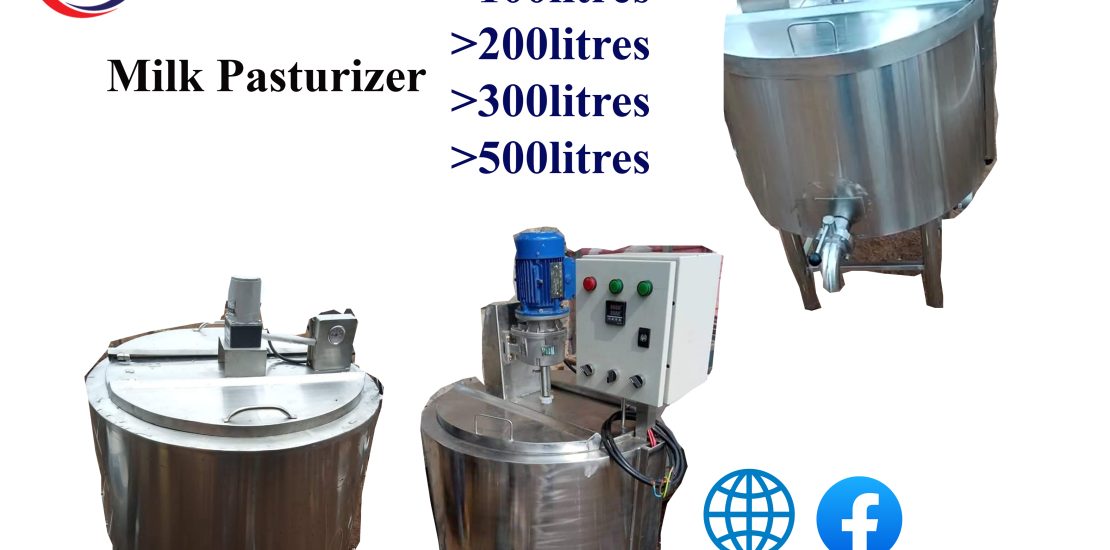- November 21, 2023
- Posted by: VisionPlus Automation
- Categories: Milk Pasteurization, Milk pasteurizer

The Stages of Milk Pasteurization
The Stages of Milk Pasteurization
Introduction
Milk pasteurization is a crucial process in the dairy industry, designed to eliminate harmful bacteria while preserving the nutritional quality of the milk. This essay explores the various stages of milk pasteurization, from raw milk to the final, safe product that reaches consumers’ homes, emphasizing the importance of controlled heat treatment in ensuring both safety and quality.
1. Raw Milk Collection and Storage:
The journey of milk pasteurization begins with the collection of raw milk from dairy farms. The milk is transported to processing plants where it undergoes initial quality checks. Upon arrival, it is essential to cool the raw milk quickly to inhibit bacterial growth and maintain freshness. Proper storage conditions are crucial at this stage to prevent contamination and preserve the integrity of the milk.
2. Preheating:
Before the actual pasteurization process begins, the raw milk undergoes preheating. This initial heating step brings the temperature of the milk closer to the pasteurization temperature. Preheating ensures uniform treatment during the subsequent stages and minimizes the thermal shock that could affect the quality of the final product.
3. Pasteurization Temperature:
The core of the pasteurization process is the application of heat to the milk. There are different methods of pasteurization, each involving specific temperature-time combinations. The most common types include:
a. Low-Temperature Long-Time (LTLT) Pasteurization: This method involves heating the milk to a temperature of around 145°F (63°C) for 30 minutes. LTLT pasteurization is known for preserving the natural flavor and nutritional characteristics of the milk.
b. High-Temperature Short-Time (HTST) Pasteurization: In HTST pasteurization, the milk is rapidly heated to a temperature of about 161°F (71.7°C) for 15 seconds. This method is widely used for its efficiency in eliminating bacteria while minimizing the impact on the sensory qualities of the milk.
c. Ultra-High Temperature (UHT) Pasteurization:
UHT pasteurization involves heating the milk to temperatures above 280°F (138°C) for a very short duration, usually 2-5 seconds. This process extends the shelf life of milk significantly and is commonly used for products that do not require refrigeration until opened.
4. Cooling:
After pasteurization, the milk is rapidly cooled to stop the heating process and prevent overcooking or alteration of the milk’s flavor and texture. Quick cooling also helps maintain the nutritional profile of the milk. The efficiency of the cooling process is crucial in ensuring that the milk is rapidly brought to a temperature suitable for storage and packaging.
5. Storage and Packaging:
Once pasteurized and cooled, the milk is stored in sanitized and sealed containers. The type of packaging depends on the pasteurization method used and the intended shelf life of the product. Pasteurized milk is typically packaged in aseptic containers, bottles, or cartons that protect it from contamination and maintain its freshness until consumed.
6. Quality Checks and Distribution:
Before the pasteurized milk reaches consumers, it undergoes rigorous quality checks. These checks include testing for bacterial counts, flavor, color, and other sensory attributes. Once deemed safe and of high quality, the milk is distributed to retailers, ensuring that consumers receive a product that meets both safety standards and their expectations.
Conclusion: Ensuring Safety and Quality
The stages of milk pasteurization represent a meticulous and controlled process aimed at ensuring the safety of dairy products while preserving their nutritional integrity. From the collection of raw milk to the final quality checks, each stage plays a vital role in delivering pasteurized milk that is not only free from harmful bacteria but also retains the essential nutrients and flavor that make it a staple in households worldwide.
As consumers continue to demand safe and high-quality dairy products, the stages of milk pasteurization remain a cornerstone of the dairy industry’s commitment to meeting these expectations.
